Aluminum Plant (Pilea cadierei), also known as Watermelon Pilea or Watermelon Plant, is a perennial species belonging to the Urticaceae family. Native to China and Vietnam, this ornamental plant is cherished for its striking, pointed green leaves adorned with metallic silver markings, adding a vibrant touch to any indoor space. As a member of the Pilea genus, the Aluminum Plant is both visually appealing and easy to grow, making it an excellent choice for home gardeners.
With its unique foliage and simple care requirements, this plant thrives indoors, offering year-round beauty and a fresh aesthetic. Below, we’ll explore how to care for your Pilea aluminum plant effectively.
| Common name | Aluminum Plant, Watermelon Pilea, Watermelon Plant |
| Botanical name | Pilea cadierei |
| Family | Urticaceae |
| Genus | Pilea |
| Species | cadierei |
| Origin | China and Vietnam |
| Life cycle | Perennial |
| Plant type | Herbaceous Perennial |
| Hardiness zone | 10, 11 |
| Sunlight | Dappled Sunlight |
| Maintenance | Low |
| Soil condition | Loam |
| Soil ph | Acid |
| Drainage | Well-Drained |
| Spacing | Less than 12 in. |
| Height | 9 in. – 1 ft. |
| Flower color | Gray, Silver |
| Leaf color | Gray, Silver |
| Stem color | Green |
| Leaf benefit | Showy |
| Uses | Container |
I. Appearance and Characteristics
Pilea cadierei (or the aluminium plant or watermelon pilea) is a species of flowering plant in the nettle family Urticaceae. The species is endemic to the southern Chinese provinces of Guizhou and Yunnan, as well as Vietnam. The specific epithet cadierei refers to the 20th-century botanist R.P. Cadière. P. cadierei has earned the Royal Horticultural Society’s Award of Garden Merit for its hardiness and reliability as a houseplant. In warmer countries, usually within USDA zones 8-12, the plant may be grown outside year-round as a perennial, either in-ground or contained, and pruned about 50% during the autumn (or whenever blooming concludes).
The aluminum pilea is an evergreen perennial, growing up to 60 cm (24 in) tall and featuring dark-green, oval leaves, with slightly “textured” or “serrated” edges, and with each leaf having four raised silvery patches (hence the name “aluminium plant”). The plant forms subterranean rhizomes to colonize an area. The independent and upright stems are somewhat succulent, and may grow woody over time, at the base. The stems are mostly featureless, though (along with the stipules, petioles and blades) they have a fine coating of spindle-shaped cystoliths.
The constantly opposing arrangement of the stems and leaves are divided into petiole and leaf blade. The bald petioles are all almost the same length m, with a length of 7 to 15 millimeters. The simple, dark-green, parchment-like, almost uniformly-shaped leaf blades are obovate, with a length of 2.5 to 6 centimeters and a width of 1.5 to 3 centimeters. They have a broad, wedge-shaped or almost rounded blade base and a spiky tip.
There are three main nerves that are visible at least 3/4 of their length and there are three side nerves on each side. The leaf margins are hardly recognizable to weakly serrated or bitten out. On the upper side of the leaf there are two subdivided white furrows and this results in some silvery raised areas (hence the English designations “aluminum” or “watermelon plant”). The early falling, parchment-like stipules are initially green and brown when dry, and are 10 to 13 millimeters long and elongated with two ribs.
Inflorescence and fruit
The flowering period in China ranges from September to November. Pilea cadierei is single-sex, separated (monoecious). The male, compact, heady inflorescences contain 5 to 125 flowers on 1.5 to 4 cm long inflorescence stems. The bracts are broadly ovoid with a length of about 3 millimeters. The flower stems of the male flowers are 2 to 3 millimeters long and the flower buds are pear-shaped with a length of about 2.5 millimeters. The relatively small, white-pink flowers are fourfold.
The male flowers have a length of 2.5 to 3 millimeters and a diameter of 1.8 to 2 millimeters. The four boat-shaped, about 3 millimeter long bracts male flowers grow together up to half their length and are cartilaginous in the upper area. The four stamens protrude beyond the chalice and “explode” when shaken. The female flowers are almost seated in the cymose inflorescences. In the female flowers a rudimentary conical carpel is present in each case. With a length of 0.5 to 0.7 millimeters, the durable bracts of the female flowers are half as long as the nut fruit. In the female flowers there is usually only an upstanding fruit leaf and elongated staminodes. The female flowers have a simple style.
The fruits ripen in China between November and December. The nut fruits are always lonely and are egg-shaped and flattened at a length of about 1.5 millimeters. The seeds contain endosperm and a straight embryo with two oval-elliptical or circular cotyledons.
With a minimum temperature of 15 °C (59 °F), it is cultivated as a houseplant in temperate regions due to its decorative leaves and easy vegetative propagation through cuttings. This plant is non toxic to cats, dogs, and horses, and so is safe to have around pets.
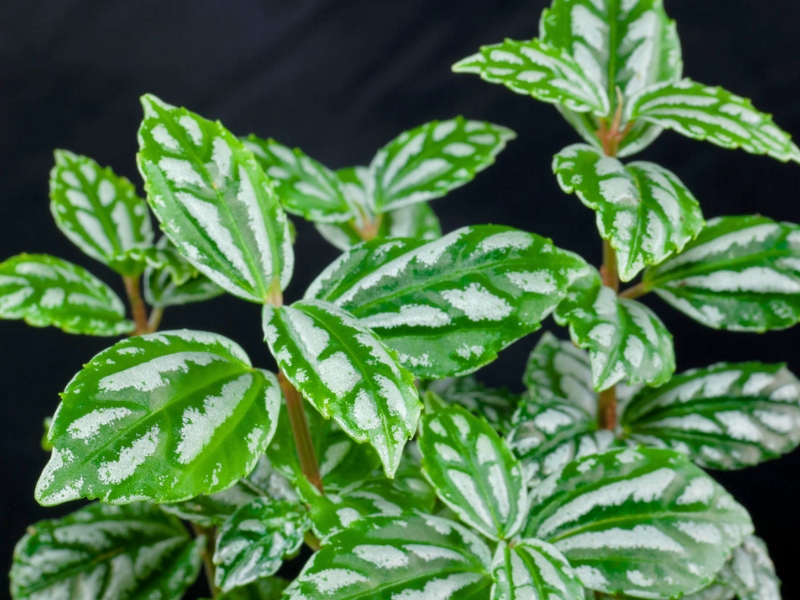
II. How to Grow and Care
Light and Temperature
Tropical plants like Pilea cadierei are slightly picky about light and temperature. They like it warmer than outdoor conditions in the continental US typically provide. Because of this, they’re grown outdoors only in USDA zones 11 and 12, in locations like Hawaii or Puerto Rico.
For houseplant lovers, this makes it a perfect fit in most homes. As long as the average temperature in your house doesn’t drop below 60 degrees, your plant should be fine.
The complication comes from its lighting preferences. Watermelon Pilea cadierei prefers very bright but indirect light for at least four hours per day. Direct sunlight can cause sunburn and discoloration of the leaves. Too little sun will cause the plant to stretch out towards the brightest light source. This legginess can be unappealing.
For most of us, placing our plant in a north-facing window should provide plenty of bright indirect light. It will also prevent direct sun exposure. Be sure to turn your plant every few days to ensure even light exposure and prevent a lopsided plant. Outdoor plantings benefit from placements below tall trees, or offset from direct sun.
Water and Humidity
Evenly-moist soil during the growing season is best for this plant. Try to prevent soil which is soggy, as this can promote root rot conditions. When the top quarter inch of the soil from the soil surface downward is dry, water again. As the seasons shift towards the colder months of the year, the plant will need less watering as the soil dries less often.
Jungle-dwelling plants like aluminum plant get lots of humidity in their natural environment. They’ll still want it even in your home. Keep your plant out of the airflow from air conditioners or heaters to prevent drying out. Also, adding a humidifier or pebble tray with water beneath the plant helps. This raises the humidity directly around your plant. Misting it may also be of use.
Those of us who are lucky enough to have north-facing bathrooms with windows have an added bonus. This plant absolutely loves the humidity that builds up in most bathrooms. The steam from the shower will be a perfect match for your Pilea cadierei. Outdoors, dense plantings and moist soil provide the needed humidity.
Soil
Unlike some other types of houseplant, this one requires soil-based potting mixes. One which is loamy or peaty, but which drains off excess water well is a must. It should be able to retain a decent amount of moisture without going muddy.
That being said, make sure your container has drainage holes that assist in drainage. The soil’s pH is not a great concern when dealing with aluminum plant. A neutral range is simplest, but it will tolerate alkaline or acidic soils as well.
Aim for a soil which is fairly organic-rich if possible. In its natural environment, leaf mulch would naturally build up around the plants. The same is best for outdoor plantings.
Fertilizing
During the growing season, use a balanced water-soluble fertilizer every few weeks to once per month on your aluminum house plants and outdoor plants. A 5-5-5 fertilizer applied to the soil once a month should be plenty. If using a stronger water-soluble fertilizer, dilute it down so it is lower-potency.
As the fall weather sets in, slow down fertilizing frequency. Skip fertilizing in winter entirely, as the plant will be somewhat dormant.
Pruning
Pinching back leggy growth will promote a more bushy growing habit. Find a joint where leaf buds are visible or where leaves have begun to grow. Pinch back the excess growth just above the leaves.
Turning the plant to ensure it has consistent light exposure can reduce legginess. It won’t entirely prevent it, but it at least slows down the inconsistent growth.
Many people will use the tips they’ve pinched back to propagate new plants from in the early spring. As these plants age, they all develop a leggy tendency. After a few years of growth, it may be easiest to simply replace your plant with a rooted cutting.
Propagation
Your aluminum house plants are best propagated from stem cuttings, as that’s the easiest method. While seed may sometimes be available, it can be more difficult to find and get started.
Take cuttings in the early spring or summer months. Select healthy stem tips for your cuttings, preferably new growth. Strip off all but the upper few leaves from the stem, and place it in your moistened soil blend.
Keep the soil moist, and the humidity up around the cutting which will readily root into the medium. It’s easiest to place a plastic bag or cover over the plant until it takes root. You will also need to provide warm conditions at around 70 degrees for good root development.
Repotting
When your indoor plant starts to produce new growth in the spring, check the plant’s roots. If they are very tightly packed in the pot, it’s time to repot.
Prepare your soil blend, and use a pot no larger than 1″ wider than your current pot. Use your fingertips to loosen the root tangle, then plant at the same height it was at before. Use just enough new soil to fill the increased space.
Pests and Diseases
Common Pests
Mealybug infestation is a possibility with your Pilea cadierei. If you find these little pests and their white fluff, act quickly. Letting them do their thing for too long may result in leaf drop. A cotton swab dipped in rubbing alcohol will make them release their grip on your plant. Neem oil is a good preventative spray.
Spider mites may also be an unfortunate house guest. You won’t see their larvae, but you’ll see the tiny mites themselves. They also cause leaf drop in large numbers. Neem can help kill off the larval phases. An organic pyrethrin spray will also eliminate these annoyances.
Common Diseases
Xanthomonas leaf spot can be a problem. This causes the silvery patches to turn brown and dry, then drop out leaving holes.
Treatment of this form of leaf spot is rarely successful. The bacterial infection rapidly spreads through the plant’s tissues. Dispose of infected plants. Avoid overhead watering as a preventative measure.
Fungal leaf spots and blights such as anthracnose are also possible. These are easier to treat. Neem oil can act as a partial preventative. Liquid copper fungicides or biofungicides are also an option.
Overwatering can help pythium root rot develop. This causes the plant to wither, look stunted, or turn yellow. While some biofungicides are effective, it’s best to prevent it. Only water when your plant needs it.
Two other forms of blight which may occur are rhizoctonia blight and southern blight. Rhizoctonia blight can be treated with the same fungicidal treatments as pythium. However, southern blight is mostly untreatable and infected plants should be destroyed.
Growing Problems
Most of the growing problems you’re likely to encounter will be related to light or water — the same kinds of issues you run into with other tropical species.
Too much sun can cause sunburn to the leaves of your aluminum plant. Your leaves may turn yellow and droop. To prevent this, provide ample bright indirect light, at at least four hours per day. Trim off burned leaves to keep the appearance nice.
Not enough light is also problematic. If a plant feels like it’s not getting enough, it’ll stretch towards the closest light source. This causes leggy and unattractive growth. Remember that an indirect light source is better than bright light from direct sunlight, or shade.
If the soil is too dry, your plant will wilt. Ensure the soil is evenly moist, and don’t allow it to become dry more than the top quarter inch beneath the surface.
Soggy soils can promote root rot conditions. Ensure excess water drains easily from the soil, but that it holds enough to sustain your plant! Drainage holes are a must.
III. Uses and Benefits
The gorgeous silvery sheen of aluminum plant’s variegated leaves is what makes it stand out. A frequent member of silver-themed gardens, aluminum plant does best in containers and hanging baskets, as an accent piece for taller plants in the garden, or grown in groups to form a groundcover.
Find Where to Buy the Best Aluminum Plant (Pilea cadierei)



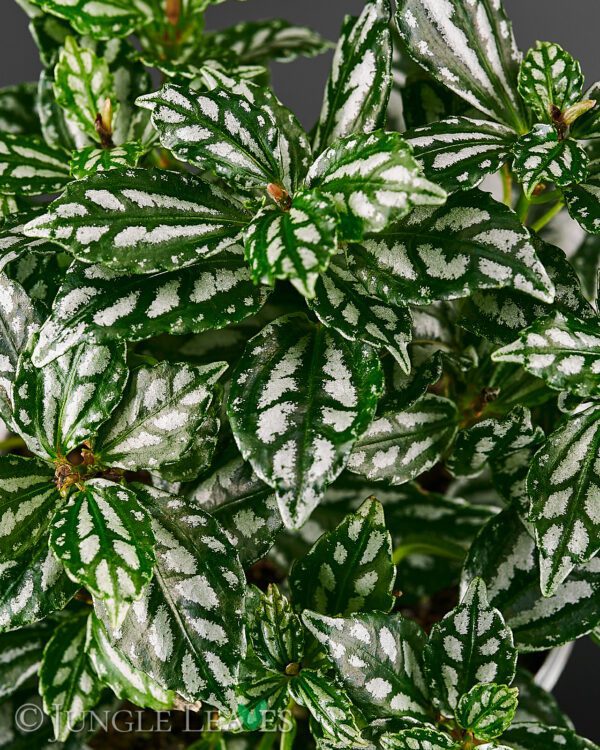



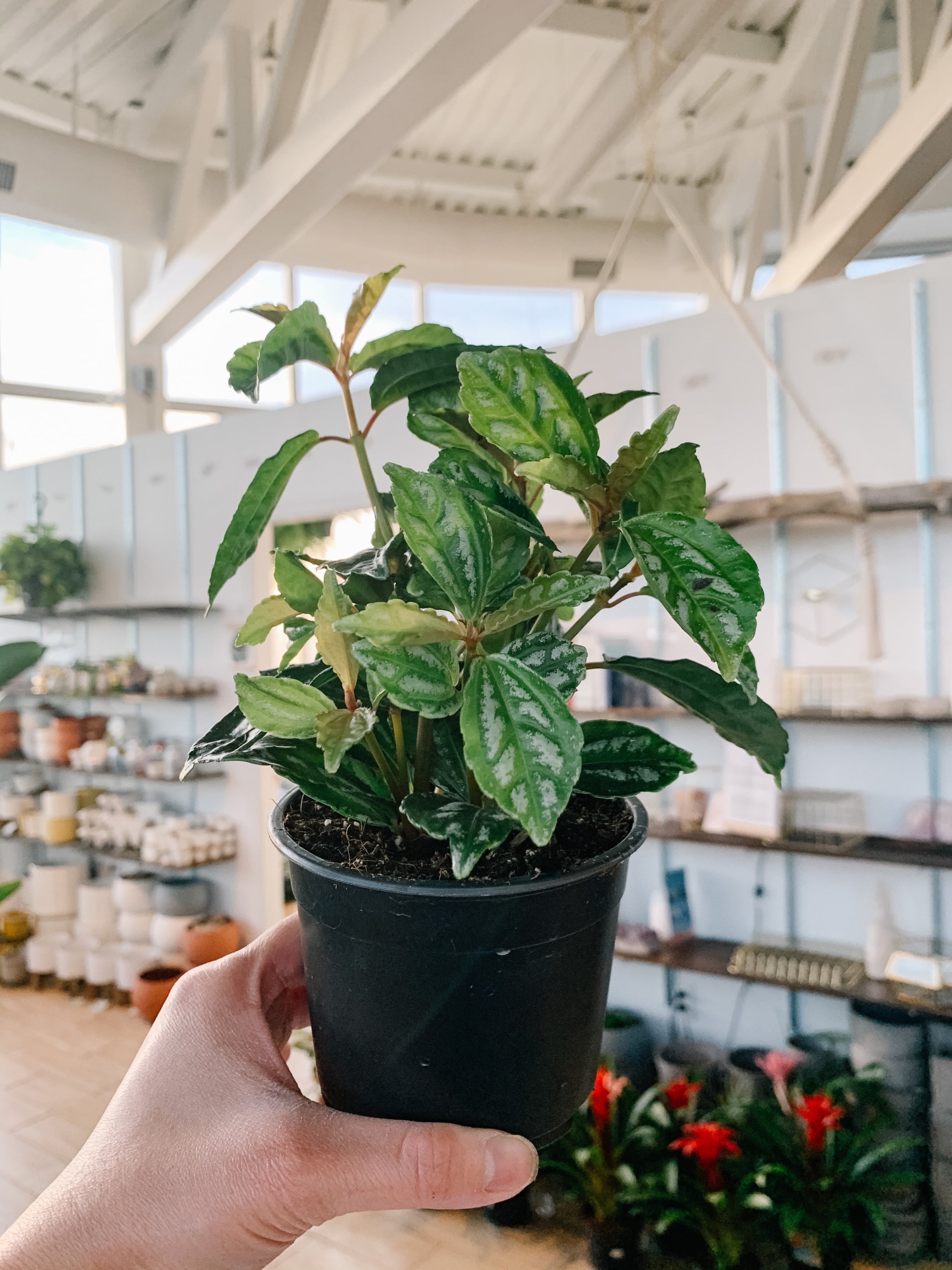


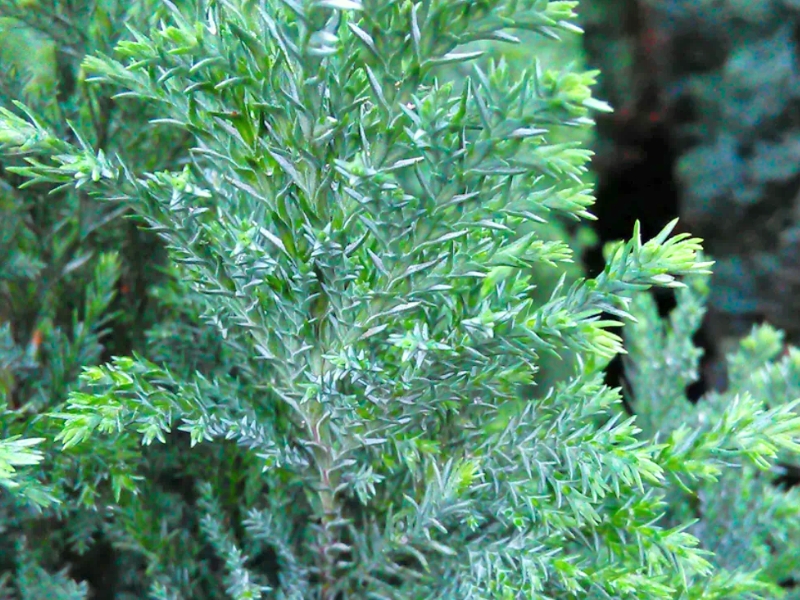
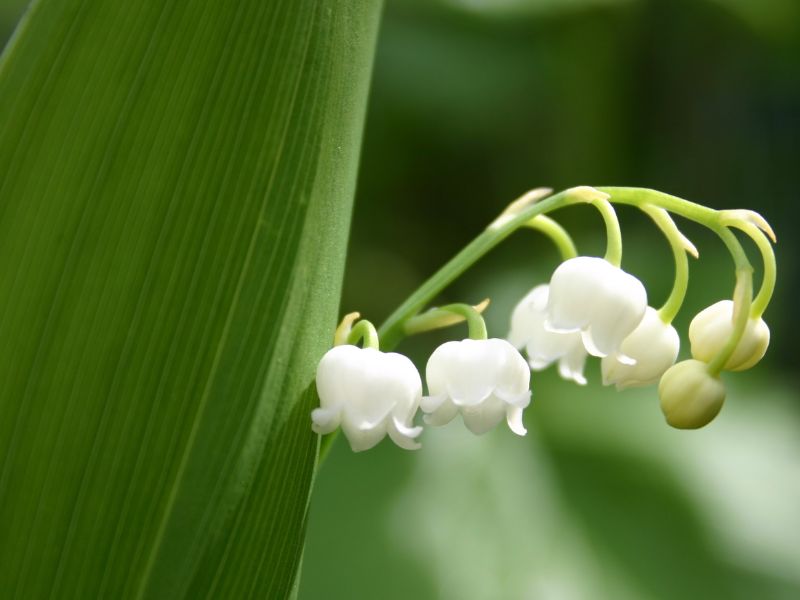
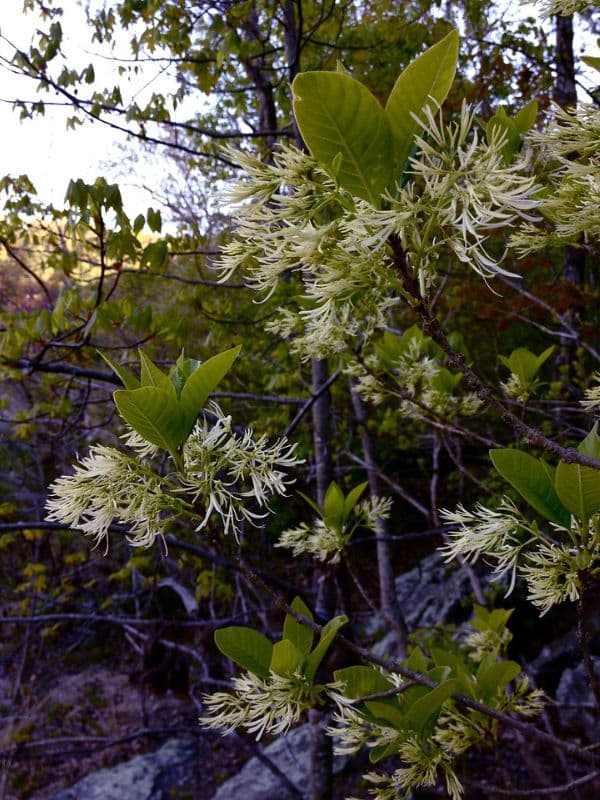
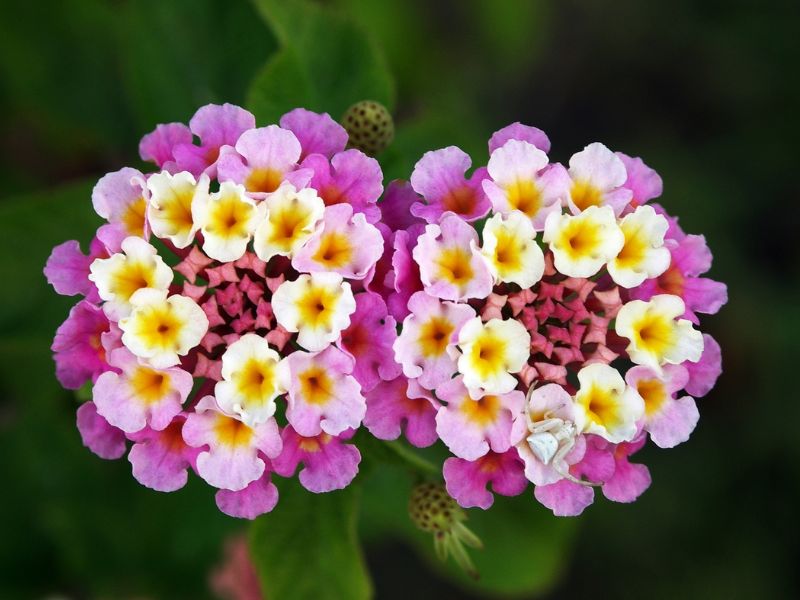
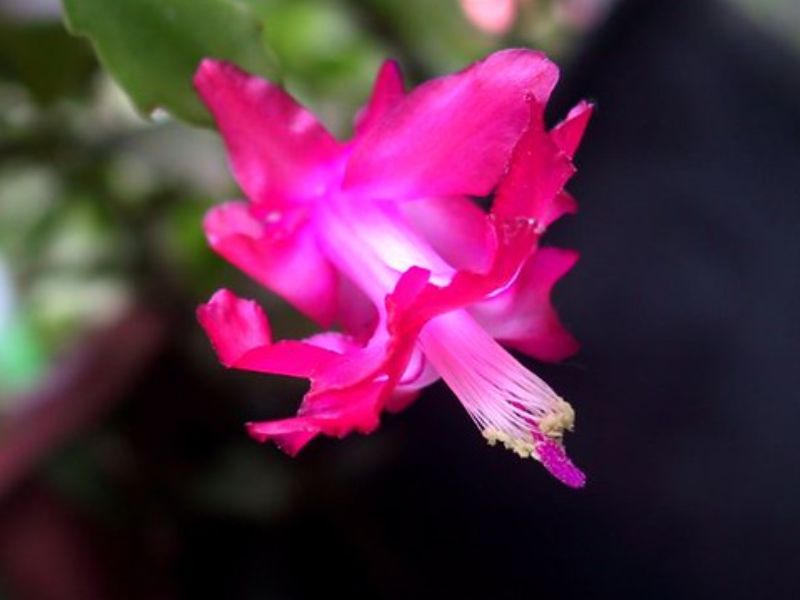
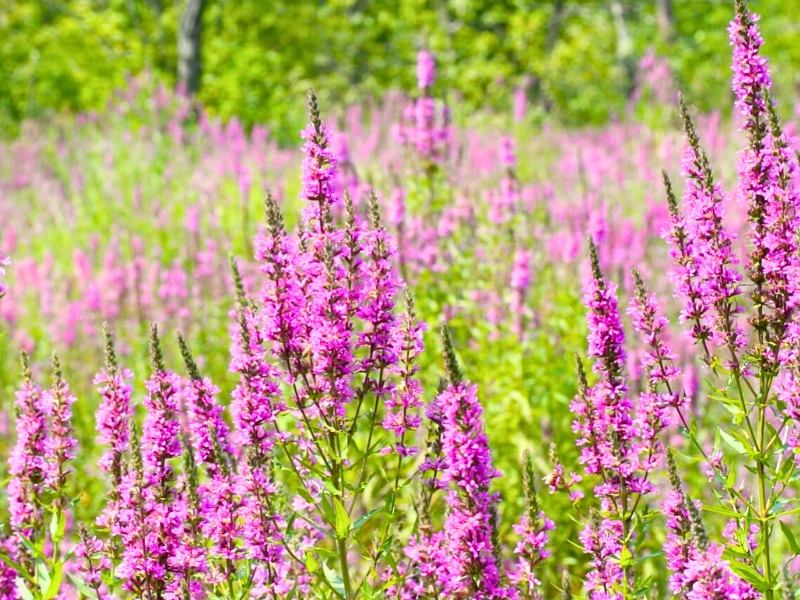
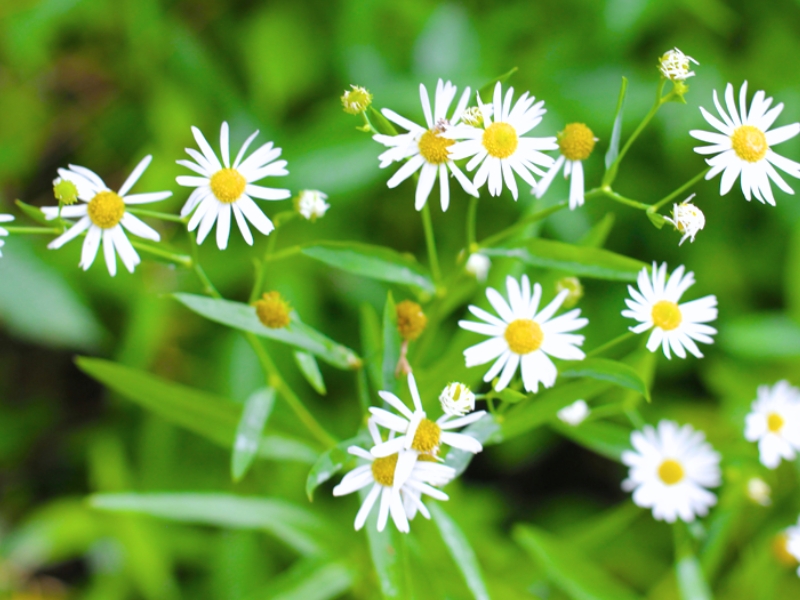
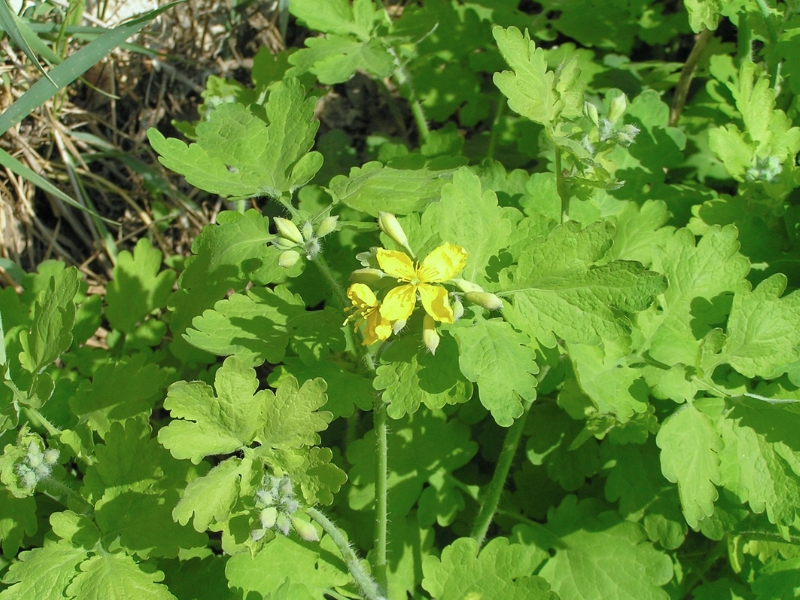
Leave a Reply